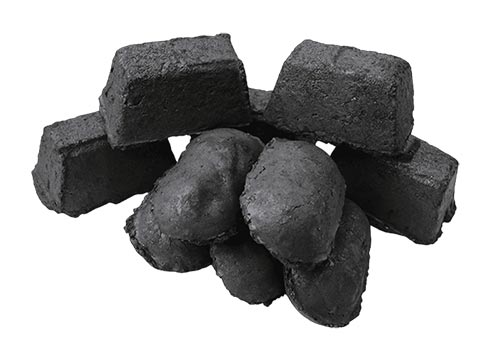How is electrode paste made?
Electrode paste is typically made through a process that involves mixing various ingredients together to create a homogeneous paste suitable for use in electrodes, such as those used in electric arc furnaces for steelmaking. The specific recipe and process can vary depending on the desired properties of the electrode paste and the manufacturer’s techniques, but here’s a general overview of how electrode paste is made:
Selection of Raw Materials: The primary raw materials used in electrode paste production include petroleum coke, coal tar pitch, and various additives such as coal tar, metallurgical coke, or graphite scrap. These materials are chosen based on their carbon content, particle size distribution, and other properties to achieve the desired characteristics in the final electrode paste.
Crushing and Grinding: The raw materials, particularly the petroleum coke, are crushed and ground to a fine powder to ensure uniformity and proper mixing. This step helps to increase the surface area of the particles, facilitating the formation of a cohesive paste.
Mixing: The crushed and ground raw materials are then mixed together in the desired proportions. The mixing process is crucial for achieving a homogeneous blend of all components, ensuring consistent quality and performance of the electrode paste.

Addition of Binder: Coal tar pitch, which serves as a binder, is added to the mixture during the mixing process. The pitch acts as an adhesive, binding the carbon particles together to form a cohesive paste that can withstand the high temperatures and mechanical stresses encountered during electrode operation.
Kneading and Extrusion: The mixed paste is kneaded to further homogenize the ingredients and improve its plasticity. It is then extruded through a die to form the final shape of the electrode paste, typically cylindrical or prismatic in form.
Baking: The formed electrode paste is baked or calcined at high temperatures in a controlled atmosphere to drive off volatile components and improve its mechanical strength and electrical conductivity. This process, known as carbonization, transforms the binder into a carbon matrix that binds the carbon particles together more effectively.
Cooling and Packaging: After baking, the electrode paste is cooled and inspected for quality control purposes. Once deemed satisfactory, it is packaged into containers suitable for storage and transportation to end-users, such as steel mills.
Throughout the entire manufacturing process, strict quality control measures are implemented to ensure that the electrode paste meets the required specifications and performs reliably in industrial applications.





